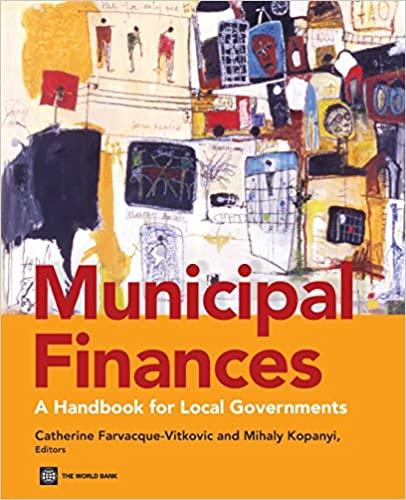


Q1 (0.5').If the rate on one-year Treasury strips currently is 6 percent, what is the repayment probability for each of the following two securities? Assume that if the loan is defaulted, no payments are expected. What is the market-determined risk premium for the corresponding probability of default for each security? a. One-year AA-rated zero coupon bond yielding 9.5 percent. b. One-year BB-rated zero coupon bond yielding 13.5 percent. Q2 (0.5'). A bank has made a loan charging a base lending rate of 10 percent. It expects a probability of default of 5 percent. If the loan is defaulted, the bank expects to recover 50 percent of its money through the sale of its collateral. What is the expected return on this loan? Q3 (0.5'). Suppose an FI manager wants to find the probability of default on a two-year loan. For the one-year loan, 1- P1 = 0.03 is the marginal and total or cumulative probability (Cp) of default in year 1. For the second year, suppose that 1 - p2 = 0.05. Calculate the cumulative probability of default over the next two years. Q4 (0.75'). The following is a schedule of historical defaults (yearly and cumulative) experienced by an FI manager on a portfolio of commercial and mortgage loans. Complete the blank spaces in the table. Years after Issuance 2 Years 3 Years 1 Year 4 Years 5 Years Loan Type Commercial: Annual default Cumulative default 0.00% 0.50% 0.30% 0.10% 0.80% Mortgage: Annual default Cumulative default 0.10% 0.25% 0.60% 0.80% 1.64% Q5 (0.75'). From the Treasury strip yield curve, the current required yields on one- and two- year Treasuries are ij = 4.65 percent and iz = 5.50 percent, respectively. Further, the current yield curve indicates that appropriate one-year discount bonds are yielding ki = 8.5 percent, and two-year bonds are yielding k2 = 10.25 percent. a. Calculate the one-year forward rate on the Treasuries and the corporate bond. b. Using the current and forward one-year rates, calculate the marginal probability of repayment on the corporate bond in years 1 and 2, respectively. c. Calculate the cumulative probability of default on the corporate bond over the next two years. Q6. (0.5') Merton Distance to Default: The Value of a company's equity is $4 million and the volatility of its equity is 60%. The debt that will have to be repaid in two years is $15 million. The risk-free interest rate is 6% per annum. Use Merton's model to estimate the probability of default. (Hint: The Solver function in Excel can be used for this question). Q1 (0.5').If the rate on one-year Treasury strips currently is 6 percent, what is the repayment probability for each of the following two securities? Assume that if the loan is defaulted, no payments are expected. What is the market-determined risk premium for the corresponding probability of default for each security? a. One-year AA-rated zero coupon bond yielding 9.5 percent. b. One-year BB-rated zero coupon bond yielding 13.5 percent. Q2 (0.5'). A bank has made a loan charging a base lending rate of 10 percent. It expects a probability of default of 5 percent. If the loan is defaulted, the bank expects to recover 50 percent of its money through the sale of its collateral. What is the expected return on this loan? Q3 (0.5'). Suppose an FI manager wants to find the probability of default on a two-year loan. For the one-year loan, 1- P1 = 0.03 is the marginal and total or cumulative probability (Cp) of default in year 1. For the second year, suppose that 1 - p2 = 0.05. Calculate the cumulative probability of default over the next two years. Q4 (0.75'). The following is a schedule of historical defaults (yearly and cumulative) experienced by an FI manager on a portfolio of commercial and mortgage loans. Complete the blank spaces in the table. Years after Issuance 2 Years 3 Years 1 Year 4 Years 5 Years Loan Type Commercial: Annual default Cumulative default 0.00% 0.50% 0.30% 0.10% 0.80% Mortgage: Annual default Cumulative default 0.10% 0.25% 0.60% 0.80% 1.64% Q5 (0.75'). From the Treasury strip yield curve, the current required yields on one- and two- year Treasuries are ij = 4.65 percent and iz = 5.50 percent, respectively. Further, the current yield curve indicates that appropriate one-year discount bonds are yielding ki = 8.5 percent, and two-year bonds are yielding k2 = 10.25 percent. a. Calculate the one-year forward rate on the Treasuries and the corporate bond. b. Using the current and forward one-year rates, calculate the marginal probability of repayment on the corporate bond in years 1 and 2, respectively. c. Calculate the cumulative probability of default on the corporate bond over the next two years. Q6. (0.5') Merton Distance to Default: The Value of a company's equity is $4 million and the volatility of its equity is 60%. The debt that will have to be repaid in two years is $15 million. The risk-free interest rate is 6% per annum. Use Merton's model to estimate the probability of default. (Hint: The Solver function in Excel can be used for this question)









